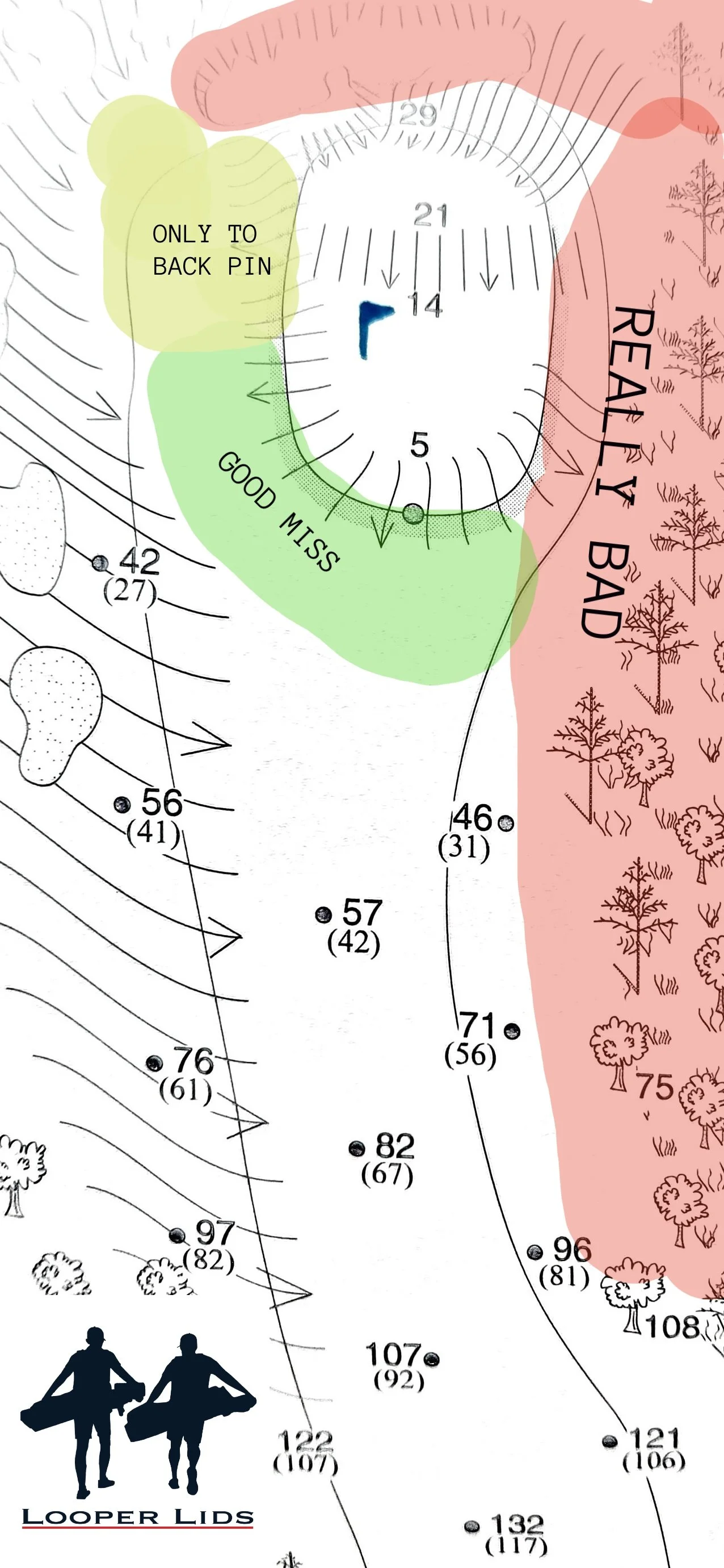Course Breakdown: Kingsley #15
I’m pretty sure if you looked at the posted scores between the par-5 14th and the par-4 15th, the 15th would have the higher scoring average. This hole is hard, plain and simple. Our objective when playing it is to not make it any harder than it already is. From the blue tees, this hole plays 420 yards and is usually into the wind. The green is elevated and plays 10 yards uphill, with false fronts short, left, and right. The back bunker isn’t a great place to end up either, so don’t think you can miss long here. Like I said, this hole is hard.
The fairway is really wide but has a large hill on the left side. The hill slopes hard from left to right and peaks at about 230 yards. Any drive that doesn’t carry the 230-yard hill will either stop dead in its tracks or kick hard right. There is a waste area to the left of the fairway, and this is where you cannot miss on your tee shot. You’ll either have to come out sideways or hope to get lucky and hit your shot through three rows of pine trees. If you make bogey from here, you’re doing great, sweetie!
The fairway bottlenecks at about 240 yards, with the right trees quickly coming into play. This is another reason this hole is difficult. Lots of “good” tee shots kick far enough right to get blocked out by the trees, forcing a golfer to hit a left-to-right shot around them. To make matters worse, the right side of the fairway slightly slopes back left, making the shot even more difficult because the lie encourages the ball to go left.
Now that I’ve got your attention, the key to this hole is your third shot. If you're like 97.4% of other golfers, you're not hitting the green in two on this beast. The real question is: where’s the best place to hit your third shot from? The answer is short left, no matter where the pin is located. You’re still dealing with a false front right in front of you, but from here, you can easily putt or chip. I truly believe most golfers should just pretend this hole is a par 5, so they don’t try to hit a miracle shot and end up with an 8+.
As mentioned, the green sits about 4 feet above the fairway and slopes off to the lower areas if you’re short, left or right. This makes chipping around the green tough because you have to get the ball to stop on top of this plateau. There is a ridge that distinguishes the lower tier and upper tier on this two tier green. The front tier consists of the front 2/3rds of the green and the general slope is back to front and right to left. This is why the miss left is so much better than right because you will be chipping/putting into a bit of an upslope as opposed to a downhill chip.
The back tier is a much smaller target but offers some relief with a backstop in the back right corner. This backstop is incredibly useful if you manage to miss in our “good” short/left position. When the pin is back here, an intention of missing short is safer than pin hunting. A shot that misses left with the distance of getting all the way back to the back plateau will leave an impossible bunker shot from beyond the green.
I keep going back to this point but when you come across a golf hole with this level of difficulty, know your limits and make your course management decisions knowing that a bogey is a perfectly acceptable score. I’ve seen a trend that some members are beginning to hit a 220 yard shot off the tee to just try and find the fat part of the fairway and play for bogey.
Quick Tips:
Generally speaking, you cannot feel the hurting wind because of blocking trees. If #10 was downwind, #15 has to be into the wind.
A putt from the top tier to the bottom tier is extremely fast. If a ball just creeps over the ridge, it will trundle another 15 feet.


